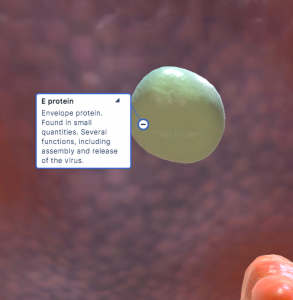
SARS-CoV2, COVID-19 Molecular Structure
It is still fascinating that this 200-nanometer virus has wholly locked down the most significant parts of the world. Severe Acute Respiratory Syndrome Coronavirus 2, aka SARS-Cov2, or COVID-19 has been the novel coronavirus responsible for the drastic change in our world today. The virus is more understood in a myriad of ways in the short duration of its 6-month inception, from its clinical presentation to gene expression to diagnostic testing to clinical management to potential treatment therapies all discovered in record-breaking time. It is unlike anything we’ve seen in human history, let alone medical history with drastic implications spanning both micro and macroscopic levels in virtually every aspect of human society. Developments in testing for both diagnostic and antibody testing has ramped up production in every sector of the medical laboratory market. Practically the entire media and internet search results are saturated, speaking on everything coronavirus affecting our modern world. However, the noise of the discussion is about something we cannot see with our eyes. It can be challenging to imagine, but in this blog post, we attempt to explore and shed light on the invisible enemy by examining its molecular structure in detail.
The number of discovered viral species now counts approximately 5000 different viruses, although it is known that there are millions of distinct types of infections that are diverse. The Baltimore classification is the current taxonomy used to classify the range of viral species by DNA type. The Coronavirus family in this classification model in which its shape resembles the corona of the sun. The viral envelope is a structure that surrounds the genetic material of the virus, like DNA or RNA. The novel coronavirus, SARS-CoV2, COVID-19, is a Single-Stranded RNA virus, aka ssRNA. Embedded on the viral envelope are an array of proteins, each serving a specific function vital to the virus’s survival.
The S Protein – Spike protein. Binds to its receptor in the lung’s epithelial cells to infect them. Protein has between 10 and 20 times the affinity to bind to ACE2 receptors on human cells compared to the S protein from SARS in 2002, possibly making its transmission easier.

The E Protein – Envelope protein. Found in small quantities. Several functions, including assembly and release of the virus, yet it’s still being understood.

The M Protein – Membrane protein. Most abundant structural protein. Exists as a dimer (two connected). Promotes membrane curvature and binding to nucleocapsid.

ssRNA – The genetic material that encodes the proteins for viral development, assembly, and replication.

Together these components make up the molecular structure of Severe Acute Respiratory Syndrome Coronavirus 2, aka SARS-CoV2, or COVID-19. Knowledge is power; hopefully, this post has broadened your understanding of the virus and maintaining the social distancing efforts to prevent its spread. BioDigital is a company that rendered this interactive 3D model, which can be viewed by clicking here.
Photo Credit: BioDigital




Andy Alem
The LabFinder Editorial Team is behind The Illuminator and The Insider, LabFinder’s consumer and business blogs.
Dr.Robert Segal
Dr. Segal is CEO and co-founder of LabFinder, as well as a board-certified cardiologist. He began practicing medicine in 2002 and has founded several businesses, including Medical Offices of Manhattan and Manhattan Cardiology.